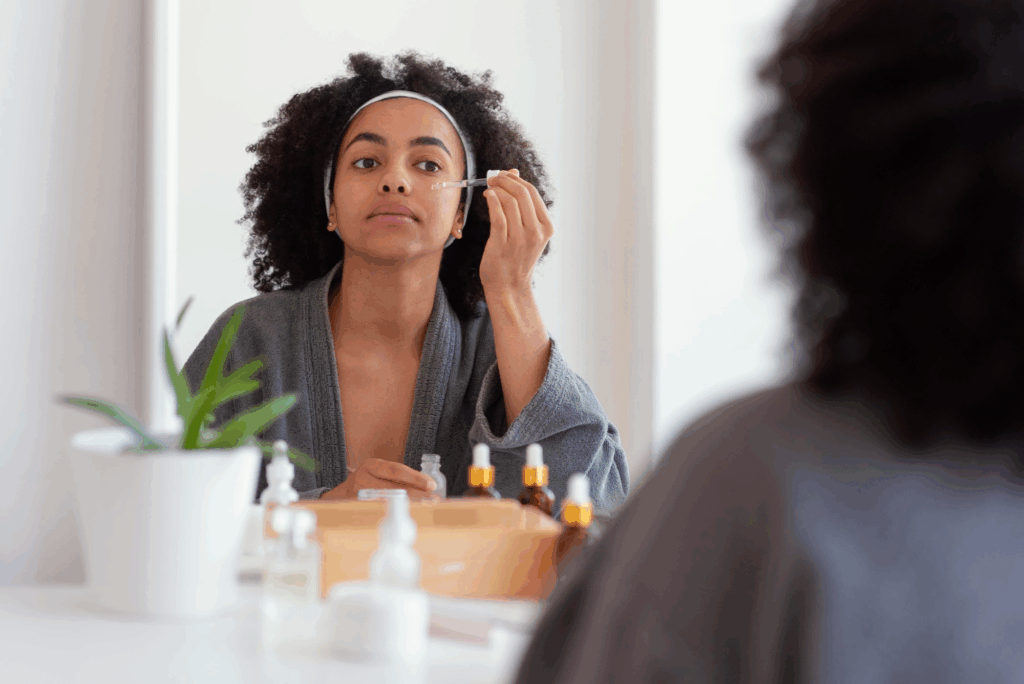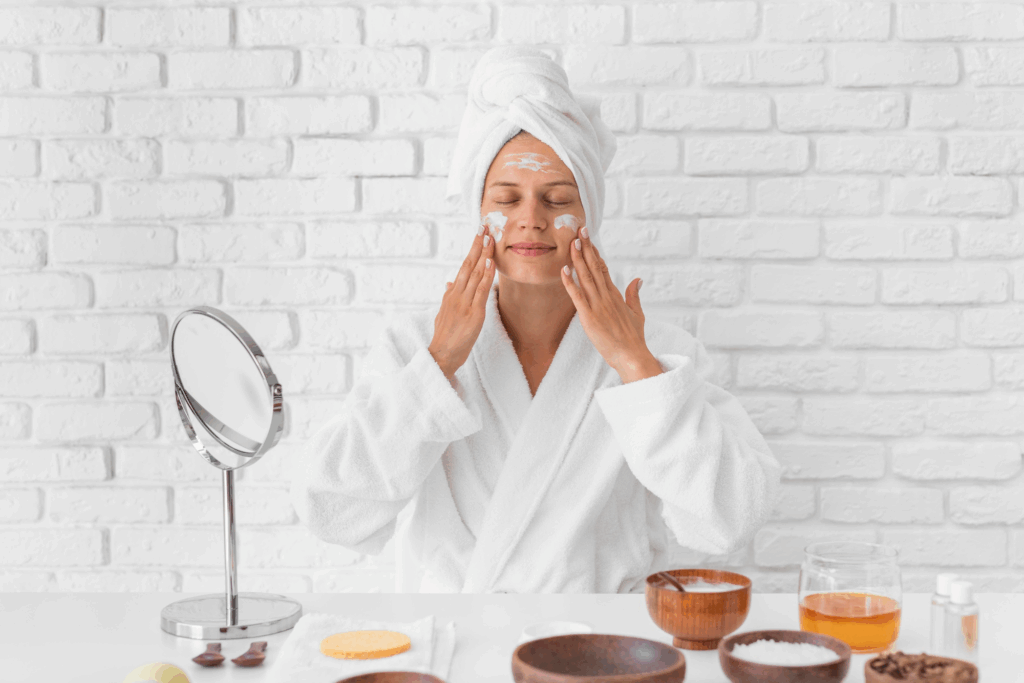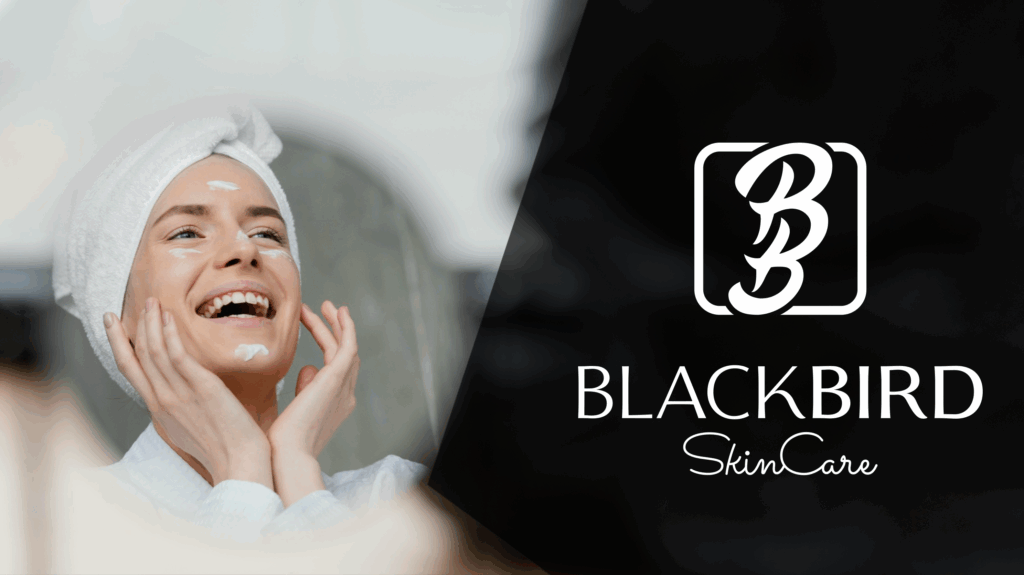As winter’s icy grip fades and spring begins to unfold, our skin undergoes a significant shift—one that often happens faster than most people realize. The cold, dry months leave behind a trail of dehydration, a compromised barrier, and a buildup of heavier skincare and makeup products. Suddenly, the environment changes: temperatures rise, humidity increases, and allergens like pollen fill the air. This seasonal transition brings both opportunities for renewal and challenges that demand a thoughtful response.
Spring is a season of rebalancing. Skin that was thirsty for rich creams in January may now need lighter hydration to prevent congestion, yet still requires enough nourishment to keep dryness at bay. The boost in UV intensity, even on cooler days, accelerates photoaging if protection is neglected. At the same time, warmer weather can trigger increased sebum production, leading to seasonal breakouts—especially if winter’s heavy occlusives are still in the mix. These rapid changes make it essential to reassess not just what products are used, but how they are layered, applied, and adapted to individual skin needs.
Adapting a skincare routine in spring is more than just swapping out a moisturizer—it’s about applying science-backed principles to address the environmental realities of the season. From protecting against oxidative stress caused by higher UV exposure to supporting barrier recovery after harsh winter weather, a strategic approach ensures skin stays healthy, resilient, and radiant. This guide blends ingredient innovation, environmental insight, and proven skincare strategies to help transform spring into a season of visible skin renewal.
Spring’s Impact on Skin
Spring is often seen as a time of renewal, but for skin, this season can be a complex balancing act. The shift from dry, heated indoor air to warmer, more humid outdoor conditions triggers multiple biological changes. Sebum production often increases in response to humidity, which can be beneficial for dryness-prone skin but problematic for those with combination or oily types. At the same time, higher moisture in the air means skin’s natural hydration needs adjust—heavy occlusive creams from winter can now feel suffocating, potentially clogging pores if not replaced with lighter, breathable formulas.
Moisture & Oil Rebalancing
As spring arrives, rising humidity changes how the skin manages water and oil. After the dryness of winter, this added environmental moisture helps the skin retain hydration more effectively, easing tightness and flakiness. However, for those with oily or combination skin, the same shift can trigger excess sebum production, leading to shine, congestion, and breakouts.
To maintain balance, focus on a mix of humectants like hyaluronic acid or glycerin to draw in water, paired with light emollients such as squalane or jojoba oil to smooth without clogging pores. In humid conditions, heavy occlusives can feel suffocating, so breathable gel-cream textures are better suited for the season.
One common mistake is continuing with winter’s ultra-rich creams as the weather warms. Adjusting to lighter moisturizers, hydrating serums, and refreshing mists supports the skin’s natural rebalancing process, helping it stay fresh, clear, and prepared for the transition into summer.
UV Exposure Increase
With spring’s longer days and stronger sunlight, UVB radiation intensifies, even if the air still feels cool. This seasonal jump in UV exposure can catch many off guard, leading to early signs of photoaging, uneven pigmentation, and increased sensitivity. The skin, having been under weaker winter sun, may be more vulnerable to sudden exposure, making proactive protection essential.
Daily SPF use becomes non-negotiable at this stage, ideally with a broad-spectrum sunscreen that shields against both UVA and UVB rays. Lightweight, non-greasy formulas—such as gel-based or water-light fluids—fit comfortably into spring routines without feeling heavy. For added defense, antioxidants like vitamin C or ferulic acid can be layered underneath sunscreen to neutralize free radicals and enhance UV protection.
Neglecting sun care in spring often leads to cumulative damage that becomes visible in summer and beyond. By making SPF a consistent habit now, skin is better protected against not only seasonal sunburns but also long-term collagen loss and discoloration, ensuring a healthier, more resilient complexion year-round.

Allergen & Pollution Load
Spring marks the peak of airborne allergens such as pollen, mold spores, and plant debris, which can cling to the skin’s surface and trigger a cascade of irritation. For sensitive or reactive skin types, this often means flare-ups of redness, itchiness, or eczema-like patches. These allergens don’t just rest on the surface—they can interact with the skin barrier, making it more permeable and prone to inflammation. Combined with urban air pollutants such as particulate matter (PM2.5), nitrogen dioxide, and ozone, the skin faces a double assault that accelerates oxidative stress and depletes its natural antioxidant reserves.
Pollution particles are small enough to penetrate pores, leading to micro-inflammation, clogged follicles, and an increased risk of dullness or uneven tone. Over time, these aggressors can degrade collagen and elastin, speeding up visible aging. In areas with high traffic or industrial output, the combined effect of allergens and pollutants can be particularly pronounced, making targeted protection strategies crucial.
To mitigate these effects, skincare should incorporate barrier-supporting and detoxifying elements. Antioxidant-rich serums (green tea extract, resveratrol), pollution shield polymers, and gentle cleansing routines help remove impurities without stripping the skin. Including anti-inflammatory agents such as niacinamide or centella asiatica can further calm allergen-triggered redness. By addressing both allergen and pollution load, skin is better equipped to maintain clarity, strength, and resilience through the high-irritant months of spring.
Seasonal Breakouts
As winter transitions into spring, skin often experiences a rapid shift in its oil and moisture dynamics. The increase in ambient humidity can stimulate sebaceous glands to produce more sebum, while remnants of heavier winter creams and occlusive products may still be part of the routine. This combination creates the perfect environment for clogged pores, leading to seasonal breakouts, especially in acne-prone individuals. Warmer temperatures also encourage more outdoor activity, which means increased sweat production. When sweat mixes with excess oil, environmental debris, and sunscreen residues, it can further block pores and trigger inflammation.
Seasonal breakouts are not limited to the face—they can appear on the back, chest, and shoulders, areas often neglected in skincare routines. Additionally, pollen and pollution particles, common in spring, can adhere to the skin’s surface and interact with excess sebum, exacerbating irritation and bacterial overgrowth. For those wearing masks during spring allergy season, the humid microclimate under the mask can intensify these conditions, leading to localized flare-ups, often referred to as “maskne.”
To counter seasonal breakouts effectively, spring routines should focus on deep yet gentle cleansing, balancing hydration with oil control, and incorporating non-comedogenic products. Lightweight gel moisturizers, salicylic acid or niacinamide-based serums, and occasional clay masks can help keep pores clear without over-drying. It’s equally important to avoid harsh scrubs or overly strong exfoliants, as they can strip the barrier and cause rebound oiliness. By adapting to the skin’s changing needs, it’s possible to maintain clarity and prevent spring’s surge in blemishes.
10 Essential Spring Skincare Tips
As winter fades, skin faces a rapid shift in climate—humidity rises, UV intensity increases, and environmental allergens make their seasonal debut. These changes can disrupt hydration balance, trigger sensitivity, and even lead to breakouts if routines remain stuck in the colder months. Spring offers the perfect opportunity to reset and refresh skincare habits, using lighter textures, protective antioxidants, and targeted treatments to meet the skin’s evolving needs. The following 10 tips are designed to help maintain a radiant, healthy complexion through this transitional season, blending science-backed strategies with practical, easy-to-adapt steps.
1. Switch to a Lightweight Moisturizer
Spring marks a turning point in skin’s hydration needs. During winter, heavier creams and balms help shield the skin from cold, dry air, but as temperatures rise and humidity increases, these rich formulas can feel greasy, clog pores, and disrupt the skin’s natural oil balance. A lighter moisturizer—such as a water-based gel-cream or a fluid lotion—allows the skin to breathe while still delivering adequate hydration. These formulas are designed to lock in moisture without creating a heavy occlusive layer, making them ideal for the more humid spring climate.
When selecting a spring-appropriate moisturizer, look for humectants like hyaluronic acid, glycerin, or polyglutamic acid to draw water into the skin, paired with light emollients such as squalane or jojoba oil to smooth the skin without weighing it down. For those prone to seasonal breakouts, non-comedogenic and oil-free options can help reduce congestion while keeping the complexion fresh. On the other hand, if the skin is still recovering from winter dryness, a balanced formula with ceramides can reinforce the barrier while maintaining a breathable feel.
Switching to a lightweight moisturizer is not just about comfort—it’s a seasonal strategy to prevent over-hydration and pore blockage. By aligning the product’s texture and composition with the environment, skin can remain balanced, hydrated, and less prone to irritation throughout the spring months. This adjustment also sets the foundation for layering other active skincare products, such as serums and sunscreens, without feeling heavy or sticky.
2. Revamp Your Cleansing Routine
Spring is an ideal time to reassess how you cleanse your skin. After months of using heavier moisturizers, richer sunscreens, and possibly more makeup to protect against harsh winter conditions, residue can linger on the skin and contribute to seasonal congestion. Warmer temperatures and higher humidity also mean that the skin produces more sebum, making it crucial to choose a cleansing method that effectively removes buildup without stripping essential moisture.
Switching to a gentle, pH-balanced cleanser helps maintain the skin barrier while addressing increased oil production. Gel-based or low-foam cream cleansers work well for most skin types during spring, as they provide a thorough cleanse while keeping hydration intact. For those in urban environments, formulas with mild surfactants and antioxidant-rich botanical extracts—such as green tea or chamomile—can help neutralize pollutants and reduce inflammation triggered by environmental stressors.
For an extra layer of clarity, consider adjusting your double cleansing routine. In the evening, start with a lightweight cleansing oil or micellar water to break down sunscreen, makeup, and pollutants, followed by your regular water-based cleanser to remove any remaining residue. This approach keeps skin fresh, balanced, and primed for absorbing serums and moisturizers. By fine-tuning your cleansing routine for spring, you can prevent seasonal breakouts, improve texture, and enhance the overall effectiveness of your skincare regimen.
3. Boost SPF Usage
As spring arrives, UV exposure intensifies, especially with the return of stronger UVB rays that can cause sunburn, accelerate photoaging, and trigger hyperpigmentation. Many people mistakenly reduce or skip SPF during the cooler months, but spring marks a crucial point to ramp up daily sun protection—particularly as outdoor activities increase and daylight hours get longer. Even mild sunlight can cause cumulative damage that weakens collagen, disrupts skin tone, and worsens fine lines.
Opt for a broad-spectrum sunscreen with SPF 30 or higher to shield against both UVA and UVB rays. For daily wear, lightweight or gel-based formulas are ideal for warmer, more humid weather, as they absorb quickly without leaving a heavy or greasy finish. Tinted SPF options can also double as a complexion enhancer, streamlining morning routines while ensuring adequate coverage.
Reapplication is equally important—especially for those spending extended time outdoors. Carry a travel-sized sunscreen, SPF mist, or cushion compact to refresh protection every two hours without disturbing makeup. Pairing sunscreen with antioxidant-rich serums, such as those containing vitamin C or ferulic acid, offers added defense by neutralizing free radicals generated by UV exposure.
Making SPF a non-negotiable step in your spring routine not only preserves skin health in the short term but also safeguards long-term radiance and resilience.

4. Incorporate Antioxidant Serums
Spring brings longer days, increased outdoor exposure, and fluctuating environmental stressors such as UV radiation, pollen, and pollution. These factors can accelerate the production of free radicals—unstable molecules that damage skin cells, break down collagen, and trigger premature aging. Antioxidant serums act as a shield, neutralizing these harmful molecules before they cause visible skin damage, making them an essential step in any spring skincare routine.
Look for serums formulated with powerhouse antioxidants like vitamin C (ascorbic acid or stable derivatives such as sodium ascorbyl phosphate), resveratrol, and ferulic acid. Vitamin C is particularly valuable in spring, as it brightens skin tone, helps fade pigmentation from past sun exposure, and boosts collagen synthesis. Resveratrol offers a strong anti-inflammatory benefit, while ferulic acid not only provides antioxidant defense but also stabilizes and enhances the performance of other actives.
To maximize results, apply antioxidant serums in the morning before sunscreen. This combination provides a two-tiered defense: antioxidants neutralize free radicals, and sunscreen blocks UV rays, significantly reducing oxidative stress throughout the day. For those with sensitive skin, gentler options like green tea extract, coenzyme Q10, or niacinamide deliver protective and soothing benefits without irritation.
By incorporating antioxidant serums into your spring regimen, you’re not only protecting your skin from seasonal aggressors but also enhancing radiance and maintaining a youthful, even-toned complexion. This proactive approach ensures that your skin remains vibrant and resilient well beyond the season.
5. Gentle Exfoliation
As winter fades, many people are left with a buildup of dead skin cells caused by months of dry air, heavy moisturizers, and reduced natural exfoliation. This layer of dull, flaky skin can prevent skincare products from penetrating effectively and make the complexion appear lackluster. Spring is the perfect time to reintroduce gentle exfoliation to refresh the skin, boost cell turnover, and restore a smooth, radiant surface.
Rather than aggressive scrubs or high-strength acids, opt for milder exfoliants that balance effectiveness with skin tolerance. Lactic acid, polyhydroxy acids (PHAs), and fruit enzymes such as papaya or pineapple are excellent choices—they dissolve dead skin without causing excessive irritation or compromising the skin barrier. For more sensitive skin, enzyme-based exfoliation once or twice a week can offer visible brightening without redness.
Consistency is key. Over-exfoliating can lead to microtears, barrier damage, and increased sensitivity—especially in spring, when environmental allergens and UV exposure are higher. Limit exfoliation to one to three times per week, adjusting based on skin type and response. Follow each exfoliation session with replenishing hydration, such as a serum rich in hyaluronic acid or beta-glucan, to keep the skin balanced and comfortable.
By integrating gentle exfoliation into your spring skincare routine, you help your skin shed its winter layers, prepare it for lighter products, and enhance its natural luminosity—setting the stage for healthier, more radiant skin all season long.
6. Address Seasonal Sensitivity
Spring often triggers an increase in skin sensitivity due to environmental changes—higher pollen counts, fluctuating temperatures, and increased exposure to UV rays. These factors can compromise the skin barrier and activate inflammation pathways, resulting in redness, itching, or a general feeling of discomfort. For some, conditions like rosacea or eczema may flare up during this period.
To manage seasonal sensitivity, prioritize calming and barrier-repairing ingredients in your routine. Look for formulas containing panthenol, allantoin, madecassoside, and bisabolol, which soothe inflammation while supporting skin recovery. Switching to fragrance-free or low-sensitizer products can also reduce irritation risks. For cleansing, avoid foaming agents with high alkalinity and instead choose pH-balanced options that cleanse without stripping.
It’s also important to adjust exfoliation and active use—cutting back on strong acids or retinoids temporarily can give the skin a chance to stabilize. Layering a lightweight, ceramide-rich cream or gel moisturizer can help strengthen the barrier and lock in hydration, creating a shield against environmental triggers.
7. Eye and Lip Care
The skin around the eyes and lips is thinner and more delicate than the rest of the face, making it particularly vulnerable to seasonal dryness, UV damage, and allergen-related puffiness. During spring, wind, pollen, and fluctuating humidity can lead to chapped lips, fine lines, or dark circles becoming more pronounced.
For the eyes, choose lightweight yet hydrating formulas with peptides, caffeine, or hyaluronic acid to target puffiness and dryness. For those prone to seasonal allergies, applying a cooling gel or rollerball eye serum can help reduce swelling while delivering hydration.
Lips benefit from emollient-rich balms containing shea butter, lanolin, or plant oils such as jojoba and almond. For daytime, SPF-infused lip balms are essential to protect against UV-induced aging and hyperpigmentation. At night, a thicker overnight lip mask can help repair and replenish moisture lost during the day.
Consistent care for these two areas not only prevents seasonal discomfort but also maintains a smoother, more youthful appearance—complementing the overall effects of your spring skincare routine.
8. Use Targeted Treatments
Spring is an ideal time to address lingering skin concerns from the winter months, such as hyperpigmentation, post-acne marks, or uneven texture. With increased daylight hours and higher UV levels, pigmentation issues may worsen if left untreated. Incorporating targeted treatments allows for a focused approach—delivering potent active ingredients exactly where they are needed most.
For brightening, consider vitamin C derivatives, alpha arbutin, or tranexamic acid to fade dark spots and enhance radiance. For texture refinement, gentle retinoids, azelaic acid, or polyhydroxy acids (PHAs) can help promote smoother skin without causing excessive irritation during the season’s climate shifts. When addressing blemishes, spot treatments containing salicylic acid, sulfur, or tea tree extract can prevent breakouts from progressing.
Consistency is key—these actives should be used in moderation and paired with hydration and sun protection to maintain balance. Rotating targeted treatments in line with your skin’s changing needs ensures that progress continues without overloading the skin barrier.
9. Don’t Forget Neck & Décolletage
While most people focus their skincare efforts on the face, the neck and décolletage are equally exposed to UV rays, environmental stressors, and seasonal changes—yet often receive far less attention. Neglecting these areas can lead to premature signs of aging, such as fine lines, sagging, and uneven tone, which may become more noticeable during warmer weather when clothing reveals more skin.
The same principles of facial care apply: cleanse gently, hydrate thoroughly, and protect with daily SPF. Using serums and moisturizers on these areas—especially those containing peptides, ceramides, and antioxidants—can help maintain firmness and smoothness. Gentle exfoliation once a week can also keep the skin texture refined and even.
For added defense against seasonal sun exposure, extend sunscreen application down past the collarbone and reapply throughout the day if outdoors. Treating the neck and décolletage as part of the face in your spring skincare routine ensures a seamless, youthful look that complements overall skin health.

10. Transition Makeup for Spring Skin Health
As the seasons change, so should makeup choices—especially when skin is adjusting from winter’s dryness to spring’s increased humidity and sun exposure. Heavy, matte foundations that work well in cold, dry air can feel suffocating or cause clogged pores in warmer weather. Switching to lightweight, breathable formulas helps maintain skin health while complementing the natural glow of spring.
Opt for tinted moisturizers, skin tints, or mineral-based foundations with added SPF for dual protection and coverage. These options not only even out skin tone but also allow the skin to breathe, reducing the risk of seasonal breakouts. Oil-free and non-comedogenic formulations are ideal for those prone to congestion during the spring’s humidity shift.
Blush and highlighter textures can also be adjusted—cream or liquid formulas blend seamlessly with spring’s dewy look, while powder products may emphasize dryness if skin is still recovering from winter. Incorporating hydrating mists or setting sprays can refresh makeup throughout the day, especially when dealing with pollen or urban pollutants.
By aligning makeup choices with skincare goals, it’s possible to enhance seasonal radiance while supporting barrier health—ensuring that beauty and skin wellness work together in harmony throughout spring.
Spring is more than just a change in weather—it’s a turning point for your skin’s health and appearance. By transitioning to season-appropriate products, reinforcing sun and antioxidant protection, and focusing on hydration inside and out, you can help skin thrive well into the warmer months ahead. Whether addressing post-winter dullness, combating seasonal sensitivity, or simply refreshing your daily regimen, these 10 essential tips serve as a blueprint for healthier, more resilient skin. When combined with the right product choices and mindful routine adjustments, spring becomes a season of renewal not only for nature, but for your skin as well.
Spring Skincare Trends for 2025
Spring 2025 is shaping up to be a season where skincare is more than just seasonal maintenance—it’s about innovation, sustainability, and meeting highly personalized needs. Market trends show that both consumers and brands are gravitating toward products that merge science with environmental and lifestyle awareness, making it essential to stay ahead of these shifts when developing or refreshing product lines.
Clean Beauty
The demand for clean beauty continues to grow, with consumers seeking formulations free from unnecessary synthetics, harsh preservatives, and controversial ingredients. In spring, this often translates to lightweight, breathable products made with botanicals, bio-fermented actives, and naturally derived humectants. Transparency in ingredient sourcing and formulation practices plays a huge role in winning customer trust.
Personalized Skincare
AI-powered skin analysis tools and customizable product kits are redefining how brands cater to seasonal needs. For spring, personalization focuses on balancing hydration, boosting radiance, and managing sensitivities triggered by allergens or environmental changes. Brands offering skin quizzes or modular serums are better positioned to capture this growing market segment.
Lightweight Layering
With the transition to warmer weather, heavy winter creams give way to layering lighter, breathable formulas. Serums, mists, and emulsions that allow consumers to mix and match for their specific concerns—without overwhelming the skin—are becoming a seasonal staple.
Multi-Tasking Products
Consumers increasingly want fewer steps without sacrificing results. Hybrid products such as SPF moisturizers with antioxidants, serum-foundation hybrids, or toners with exfoliating and hydrating benefits align perfectly with spring’s shift toward efficiency and convenience.
Eco-Friendly Packaging
Sustainability remains a top purchasing driver. Refillable jars, biodegradable tubes, and post-consumer recycled plastics are in high demand. Brands that align their packaging with seasonal launches—such as limited-edition spring-themed refills—can strengthen customer loyalty.
Barrier-Boosting Actives
Skin barrier health is now a central theme in product development. Spring-friendly barrier support often includes ceramides, niacinamide, ectoin, and beta-glucan to combat moisture fluctuations and environmental aggressors. These ingredients also complement anti-pollution claims, which resonate strongly in urban markets during allergy-heavy months.
When brands align their spring skincare launches with these trends, they not only meet immediate seasonal needs but also position themselves as forward-thinking and adaptable in a competitive market.
Customizing Spring Routines by Skin Type
Spring is a transitional season, and while the environmental shifts affect everyone, each skin type responds differently to the change from cold, dry winter air to warmer, more humid spring conditions. Creating a tailored skincare approach ensures that the skin stays balanced, radiant, and resilient during this period. Brands that address these nuances can develop more effective seasonal products and help consumers achieve visible, lasting results.
Dry Skin
As humidity levels rise in spring, dry skin often experiences a partial improvement in comfort—but the barrier damage from winter can linger. The focus should be on deep, sustained hydration with ingredients like hyaluronic acid, sodium PCA, and polyglutamic acid, paired with barrier-repair actives such as ceramides, panthenol, and squalane. Cream cleansers and gentle exfoliation (using lactic acid or enzyme-based products) can help smooth winter roughness without stripping the skin. A richer night cream or overnight mask can still be beneficial during early spring, gradually transitioning to lighter textures as the season progresses.
Oily and Acne-Prone Skin
The shift to warmer weather can stimulate higher sebum production, leading to increased shine and a higher risk of clogged pores. A spring routine for oily skin should focus on balancing oil production without over-drying. Gel-based cleansers with salicylic acid or zinc can help regulate sebum, while lightweight, non-comedogenic moisturizers with niacinamide provide hydration and barrier support. Targeted treatments—like azelaic acid or tea tree extract—can address spring breakouts triggered by allergens, sweat, and environmental debris. Consistent SPF use is critical, and oil-free, mattifying sunscreen formulas are often preferred for this skin type.

Combination Skin
Combination skin needs adaptable care in spring, with lighter hydration for the T-zone and more nourishing formulas for drier areas like the cheeks. Layering is key—start with a hydrating serum across the face, then apply targeted moisturizers to different zones. Gentle exfoliation once or twice a week can help keep the skin smooth, but avoid over-exfoliating oilier areas. Niacinamide-based products can help balance sebum while supporting overall skin barrier function, making it a versatile choice for combination routines.
Sensitive or Reactive Skin
Spring brings heightened allergen exposure from pollen, dust, and pollution, which can exacerbate redness, itchiness, and irritation. For sensitive skin, barrier-protective and anti-inflammatory ingredients should take center stage—think beta-glucan, madecassoside, ectoin, and colloidal oatmeal. Avoid strong acids or high concentrations of actives until the skin is fully adapted to the season. A fragrance-free sunscreen and a protective antioxidant serum (such as one with vitamin E or green tea extract) can help reduce reactivity caused by environmental triggers.
Mature Skin
Mature skin benefits from a dual focus on hydration and protection during spring. Seasonal changes can emphasize fine lines and dullness, making antioxidant-rich serums (like vitamin C and resveratrol) essential for brightening and defense against free radical damage. Lightweight but nutrient-rich moisturizers can deliver hydration without feeling heavy, while retinol or peptide-based night treatments help maintain firmness. Consistent SPF remains a must to prevent further photoaging.
By customizing spring routines for different skin types, brands can meet precise consumer needs while educating users on why seasonal adjustments matter. This not only builds trust but also positions a product line as results-driven and adaptable—two qualities that resonate strongly in today’s skincare market.
How to Transition from Winter to Spring Skincare
Moving from winter’s harsh, dry environment into the milder, more humid conditions of spring is not just a weather shift—it’s a physiological one for your skin. The transition requires a gradual recalibration of textures, active ingredients, and overall skincare strategy to prevent seasonal breakouts, irritation, or dullness. Rather than replacing your entire routine overnight, the goal is to make incremental changes that respect the skin’s adaptive process while aligning with its evolving needs.
Step 1: Adjust Textures Gradually
In winter, rich creams, balms, and occlusive layers are often essential for combating dryness and protecting the barrier. As spring arrives, these heavier products can start to feel greasy and may even contribute to congestion in higher humidity. Instead of making a sharp switch, begin by alternating lighter textures a few times a week—such as replacing a heavy night cream with a ceramide-rich lotion or switching from an oil cleanser to a gentle gel or cream cleanser. This stepwise approach helps the skin maintain barrier integrity while avoiding sudden moisture loss or oil imbalance.
Step 2: Recalibrate Active Ingredients
Winter routines often focus on intensive repair—higher concentrations of barrier-repair actives, richer antioxidants, and occasionally stronger exfoliating acids to address dullness. As spring arrives, humidity naturally supports hydration, so actives can shift toward prevention and maintenance. For example, you might reduce the frequency of strong AHAs, replacing them with milder exfoliants like lactic acid or PHAs. Antioxidants like vitamin C, ferulic acid, and resveratrol remain valuable but may be paired with lighter hydration boosters like hyaluronic acid or beta-glucan instead of heavy occlusives. This ensures skin stays bright and resilient without overloading it.
Step 3: Balance Barrier Care and Oil Control
With rising temperatures and humidity, sebum activity may increase—especially in the T-zone. This is the time to incorporate balancing ingredients such as niacinamide, zinc PCA, or green tea extract, which help control oil without stripping the skin. Lightweight moisturizers that blend humectants and emollients, rather than dense occlusives, will maintain hydration while preventing pore congestion. For sensitive or reactive skin, spring is also when allergen exposure increases, so barrier-strengthening actives like panthenol, ectoin, and madecassoside remain critical.
Step 4: Keep Sun Protection Constant
One of the biggest seasonal mistakes is reducing SPF usage after winter. UV intensity increases significantly in spring, and skin—already adjusting to environmental changes—can be more vulnerable to sun damage and pigmentation. Maintain daily sunscreen use, but consider switching to lighter, breathable formulations or tinted SPF products for comfort in warmer weather.
By transitioning skincare from winter to spring gradually, you maintain skin stability while adapting to environmental changes. This not only helps prevent seasonal breakouts and barrier stress but also ensures that the skin remains balanced, radiant, and primed for the months ahead. In a product development context, brands can use this seasonal shift to introduce lighter textures, allergen-defense formulas, and spring-targeted antioxidant products that align with evolving consumer needs.
Partnering for Spring-Ready Skincare Lines
Seasonal changes present not only an opportunity for consumers to refresh their routines but also a strategic window for brands to capture market attention with timely, targeted product launches. Spring, in particular, offers fertile ground for innovation—lighter formulations, allergen-defense actives, antioxidant boosts, and brightening solutions align perfectly with consumer demand during this transitional period. Working with an experienced OEM/ODM partner ensures that these ideas don’t just remain concepts but are transformed into high-performance, market-ready products that resonate with seasonal buying trends.
One of the key advantages of partnering with a skilled manufacturer is the ability to translate spring skincare trends into commercially viable best-sellers. For example, the rising consumer interest in clean-label, lightweight layering routines can be captured through hybrid products—such as gel-based moisturizers with barrier-repair actives or tinted sunscreens enriched with antioxidants. Additionally, seasonal formulas that address pollen-induced sensitivity, oil-humidity imbalance, and post-winter dullness can position a brand as both trend-aware and results-driven. An OEM/ODM partner provides access to advanced formulations, stability testing, and packaging options that align with these trends while ensuring compliance with global regulations.
BlackBird Skincare specializes in helping brands create spring-focused skincare lines that are both innovative and commercially strategic. Whether it’s developing a limited-edition cherry blossom-inspired brightening serum, a lightweight moisturizer for humid climates, or an allergen-defense mist for sensitive skin, our team offers end-to-end support—from concept creation and ingredient sourcing to design, packaging, and market positioning. To explore how we can co-create your seasonal skincare collection, request samples, or collaborate on a limited-edition spring launch, get in touch with us today. Your next best-seller could be just one season away.

